1 Top reasons to migrate from Jira Cloud to Data Center:
- High Availability: A clustered environment of data center ensures the high availability, if any of the node goes down, we have standby node where the traffic can be routed and users can experience uninterrupted service. A clustering is most important feature to shift to the data center.
- Scalability : We can add nodes at any point of time to our data center architecture. So for the bigger teams it is an additional advantage for teams, that they don’t need to compromise with the performance of their jira instance.
1.1 Disaster recovery : With Jira Data Center, you get a disaster recovery site located on a separate node. If a disaster occurs, all users are redirected there without time loss, ensuring stable work.
1.2 Compliance and Security : Secure authentication protocols and advance auditing, Additional security for personal authentication with the integration of SAML 2.0.
1.3 Infrastructure : We get the choice of cloud infrastructure (AWS, Azure, GCP etc) or on premises.
2 Atlassian Jira Software Overview:
2.1 JIRA is developed by Atlassian Inc., an Australian Company..
2.2 JIRA supports MySQL, Oracle, PostgreSQL and SQL server in the backend
2.3 Jira Software is a powerful platform that combines issue collection and agile project management capabilities into a single application. Using Jira Software helps you plan and organize tasks, workflows, and reports for your agile team more efficiently.
2.4 Jira is a family of products built to help all types of teams manage their work.
2.5 Jira offer number of products and deployment options that are built for Software, IT, Business, Operations team.
2.6 Jira Core is the default product of the Jira platform, and is always part of our Jira site.
2.7 We can add Jira Software and Jira Service Management to add extra functionality and projects to our Jira site.
3 Advantages of Jira Software:
3.1 It supports roadmap requirements. Jira has tools that enable users to sketch out the big picture, communicate plans, and connect the bigger roadmap goals to the team’s everyday tasks.
3.2 Great for agile. The software provides a single view for all user stories and can generate the needed reports for various sprints, such a burndown charts, sprint velocity, and others. Also, users can organize tickets into sprints and releases, and also monitor the workload and task assignments of the team.
3.3 Available integration. The issue and project tracking software integrate with many popular third-party software. For example, integration with Slack makes it easy to communicate issues and respond to notifications. More than 3000 apps are available at the Atlassian Marketplace to extend the features of the software.
3.4 Highly customizable. Jira allows users to create any type of issue. They can also customize workflows to fit any requirement of a particular company. Users can create and customize various elements, such as tables, forms, timelines, reports, fields, and more.
3.5 Works for different types of users. The software can be used by developers, project managers, engineers, managers, and other non-tech business professionals.
4 Challenges while migrating from cloud to data center:
4.1 As we know cloud deployment has latest features which are not even present in server/data center. So we must understand the functionalities according to the version we are using.
4.2 Due to recent changes that took place in Cloud, User avatars now reside in “id.atlassian.com” [1]They are not included in the Cloud backup and, therefore, cannot be migrated to JIRA Data Center.
4.3 Your Jira Cloud users will need to reset their passwords before they can log in to the new Jira Data Center instance.
5 What makes Data center deployment different than Cloud?
5.1 Data Center uses the same application as a single server will require. But additionally we can have a different Architecture than the server.
5.2 The main advantage of using a Data center deployment is that it allows you to avoid hot failover and high availability, as it will have multiple nodes to manage the same data on each node. More precisely our data is going to be in sync on all the nodes for real time updates.
5.3 There will be a common Database for each node and the shared FS.
5.4 The Architecture diagram of Jira on data center deployment is as follows:
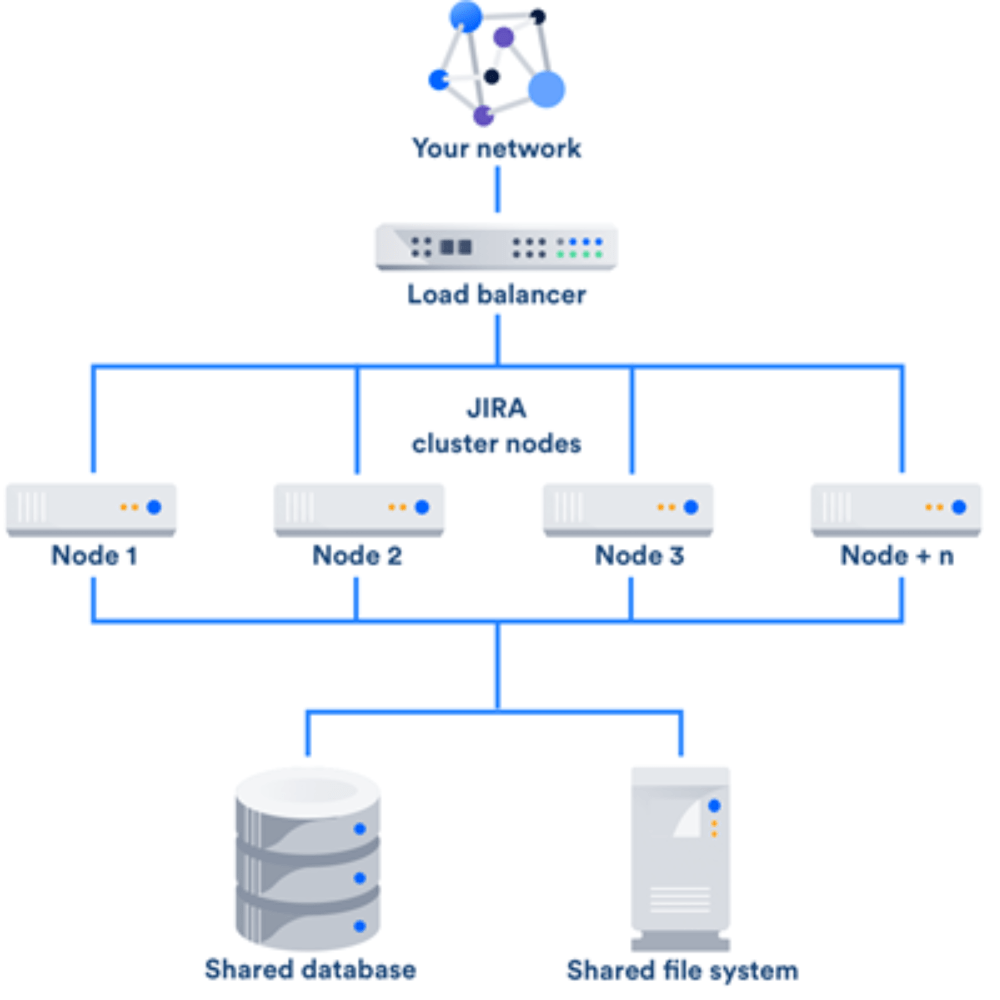
6 How to fail proof migration
There are few steps, which should be followed to fail proof our migration and make the migration process more smooth transformation over new deployment method.

7 Stage – 1 Build your team :
7.1 One of the most important parts of this journey is assembling the right team and doing so as early as possible.
7.2 The launch of Data Center will impact multiple teams across your organization and requires everyone’s collective involvement.
7.3 Once your project team is assembled, it’s important to align the team on shared goals and build your timeline with an agreed- upon target date.
7.4 There’s no definitive answer to which roles and how many people should be included on the team.
However, it’s important to consider the following areas of expertise when assembling your team:
Application Admin :
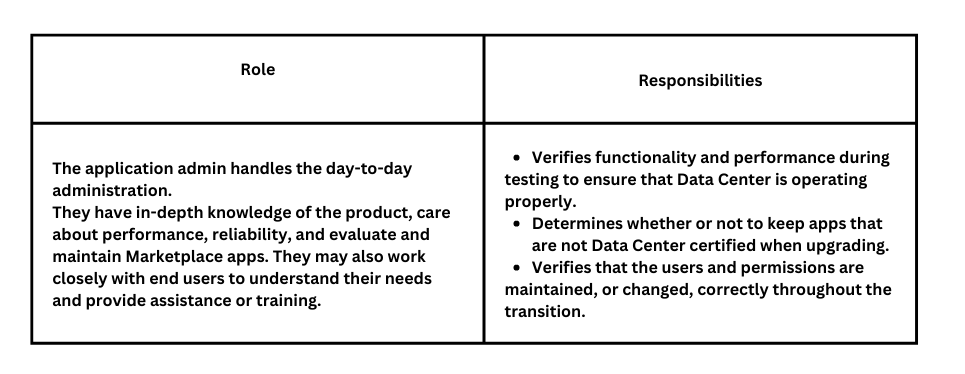
System Admin :
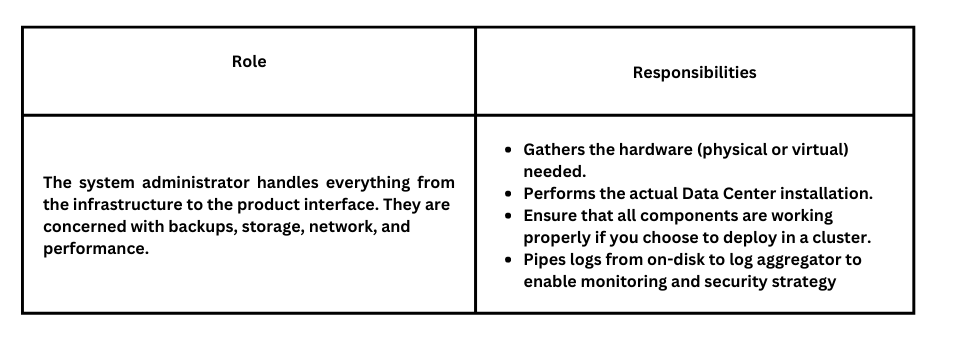
Project Lead :
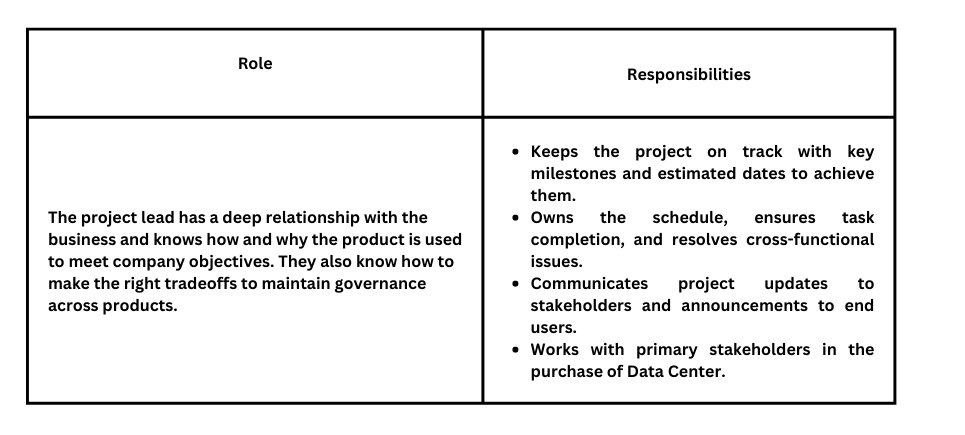
7.5 If you’re deploying Data Center in a clustered architecture, you may want to also consider having team members with technical expertise
in the following areas:
7.6 Network engineering: Review spec and build out your infrastructure.
7.7 Database administration: Confirm database integrity and smooth operations.
7.8 Site reliability: Establish instance uptime, performance, and disaster recovery operations.
7.9 Security: Ensure compliance with security standards (VPN, firewall, etc.)
8 Stage 2 – Build a timeline
Here are the basic timelines that you can use to gauge how long your migration should take.
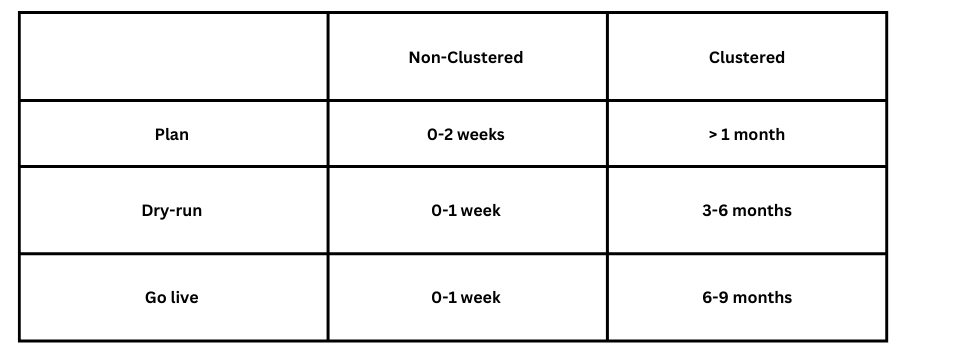
9 Stage 3 – Review existing cloud instance
- Evaluate the size of your instance:
9.1 Data Center is built to support the needs of teams at scale. To ensure that you set up your infrastructure for a successful migration, review the sizing of your current cloud instance and adjust based on profile size recommendations. As you adjust your size, consider their rate of growth so that you can scale accordingly.
- Document current processes:
9.2 After instance tuning, it’s time to document your cloud environment. This documentation can help guide configuration decisions in your Data Center migration, influence process modifications, and determine whether issues found after migrating are new or already existing.
10 Stage 4 – Audit Current Apps
10.1 Using a large number of apps may degrade the performance of your instance. It’s critical that you audit and remove apps that aren’t crucial to system functionality to increase overall system performance. You’ll also want to make sure your apps are compatible with Data Center, as your apps will need to be upgraded to a Data Center version if one is available.
10.2 You’ll want to consider both the current and future price of your apps as part of your Data Center total cost of ownership.
11 Stage 5 – Evaluate technology decisions
- Getting ahead of your technology decisions will speed up the design of a production-ready environment for your Data Center products that is tailored to your organization’s needs.
- Whether you’re going to deploy your Data Center products in a clustered or non-clustered environment, look at the infrastructure you’re currently using to run your products and consider if it makes sense for you to deploy on AWS, Azure, or your own hardware.
- If you decide to deploy in a clustered environment, you’ll need to start assessing the additional components you will need, such as a load balancer, file system, and application nodes.
- Take a moment to determine what you have available or what you may have to purchase.
12 Stage 6 – Final Migration
12.1 Implement your final migration on your clustered or non- clustered architecture for data center.
Following this stages will definitely allow your team to migrate smoothly from cloud to data center.
To know more about Jira Cloud to Data Center Migration process, connect with us & have hassle free migration.

